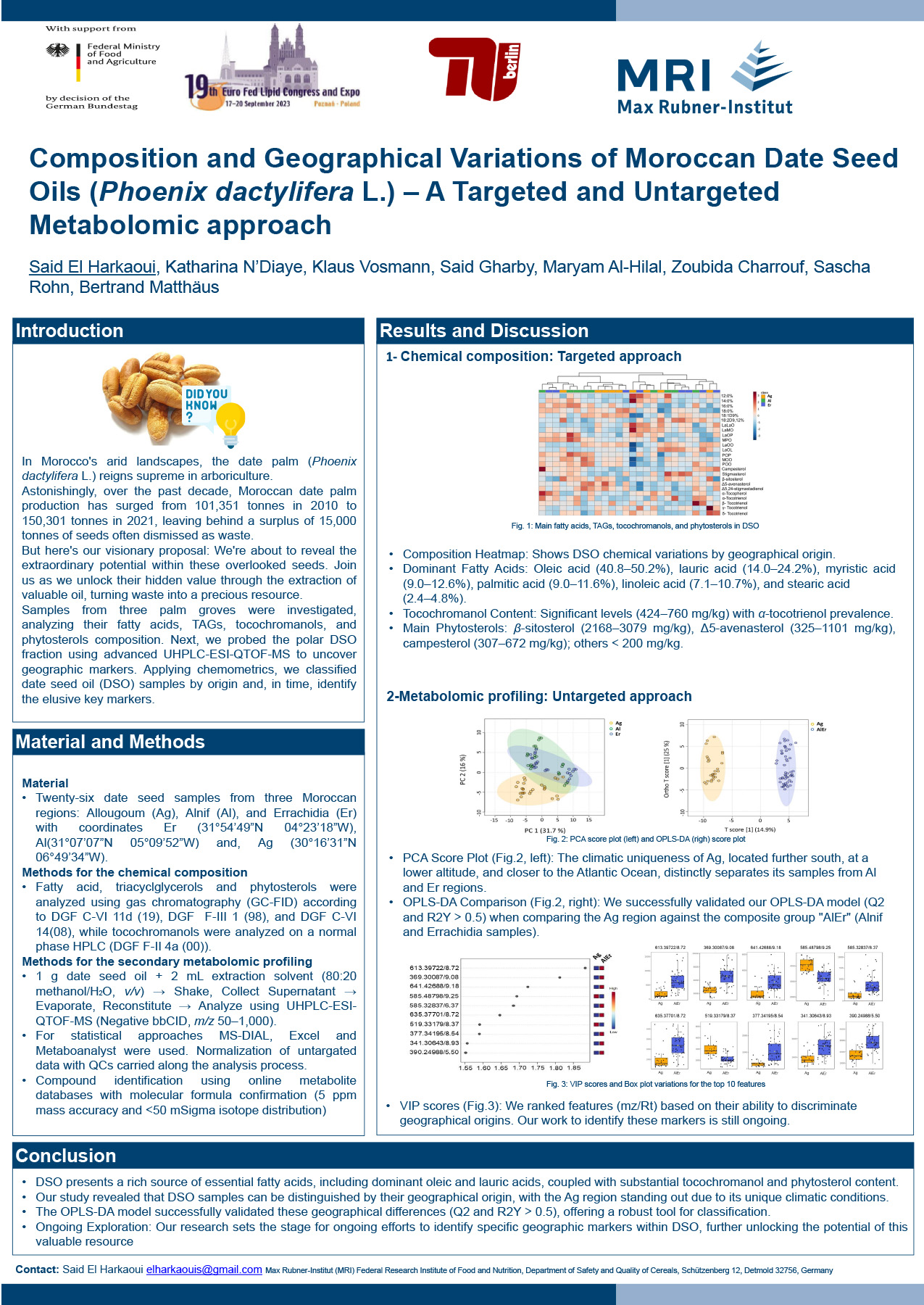The date palm tree (Phoenix dactylifera L.) is extensively cultivated in arid and semiarid regions, particularly in the Middle East and North Africa. In Morocco, it holds significant importance as the predominant arboricultural plant in arid areas. Date fruit processing and consumption generate a substantial amount of date seeds, which has been largely considered as waste despite its potential usefulness, particularly in the form of oil after extraction. Thus, the aim of this study was to promote the valorization of date seed oil and investigate its composition variations based on geographical origins, utilizing both targeted and untargeted metabolomic approaches. The study focused on samples collected from three Moroccan palm groves, namely from Allougoum, Alnif, and Errachidia regions. The composition analysis revealed that date seed samples contain oil ranging from 8 g/100 g to 10.6 g/100 g. Date seed oil (DSO) is characterized by a high content of saturated and monounsaturated fatty acids (FA), with oleic (O), lauric (La), myristic (M), palmitic (P), and linoleic (L) fatty acid being the predominant ones. The main identified triacylglycerols (TAG) include LaLaO, LaMO, LaOP, LaOO, MPO, MOO, and POO. Moroccan date seed oils also exhibited a significant amount of tocochromanols, ranged from 424 to 760 mg/kg, with α-tocotrienol as predominant form in all samples. Moreover, the total phytosterol content ranged from 3,414 to 4,813 mg/kg oil. This study also identified 24- methylenecholesterol, campestanol, Δ5,23-stigmastadienol, sitostanol, Δ7-stigmasterol, and Δ7- avenasterol in Phoenix dactylifera seed oil for the first time. To gain further insights into the polar fraction of date seed oil and achieve better discrimination based on geographical origin, a metabolomic approach using ultra-high-performance liquid chromatography coupled with quadrupole time-of-flight mass spectrometry (UHPLC-qTOF-MS) was done. This technique helped to identify chemical markers that enable discrimination between the regional Moroccan DSO. Finally, a comparison was done between the feasibility of using chemical markers (FA, TAG, Vit. E, and phytosterols) and markers identified by the metabolomic approach (polar fraction of DSOs) in combination with principal component analysis (PCA) and Orthogonal Partial Least Square Discriminant Analysis (OPLS-DA) to classify different date seed samples according to their geographical origin. By exploring the composition and geographical variations of Moroccan DSO using targeted and untargeted metabolomics approaches, this study shed light on the potential applications of date seed oil and provide insights for quality control and authentication based on geographical origin.
